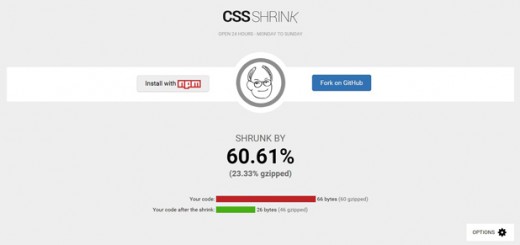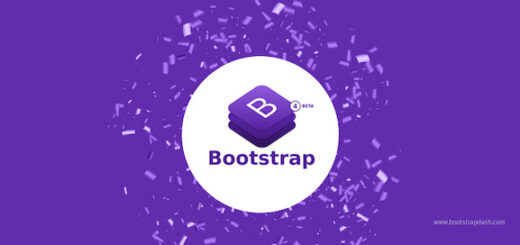Web browsers are becoming more and more powerful, and new APIs like the Web Audio API and Audio Data API are making the web an ever more interesting and dynamic place. Despite being one of the senses, sound has largely been missing from the web due to inconsistent technology support. Supporting HTML5 audio can be tedious in modern browsers, let alone legacy ones. With real-world visitors using browsers ranging from mobile Safari to IE 6 across a wide range of devices, there can be many support cases to consider.
For this article we have gathered a list of Best Tools that will help you to use their API’s to manipulate and play audio assets on a Web page or application. Following tools, plugins and JS libraries will help you to use sounds for games, synthesizers, audio players, trackers and more. All within the comfort of your browser. Enjoy !!
1. Sound Manager
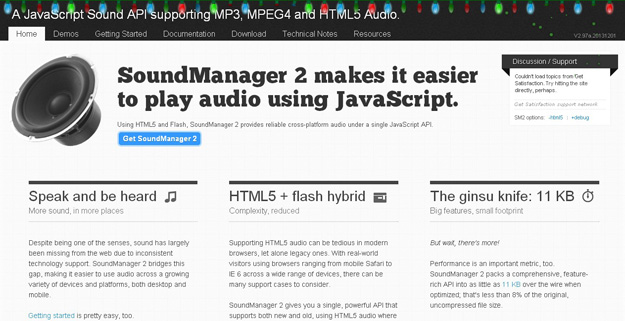
SoundManager 2 uses HTML5 and Flash to provide consistent cross-browser and cross-platform audio support with a single JavaScript API. It’s self-contained, with no external dependencies, and can be as little as 11kb when properly compressed and optimized.
2. Buzz

Buzz is a small but powerful Javascript library that allows you to easily take advantage of the new HTML5 audio element. It provides tons of methods for taking advantage of the audio element and provides a way to group sounds and offers many methods to control them. It degrades gracefully on non-modern browsers.
3. Voice Elements
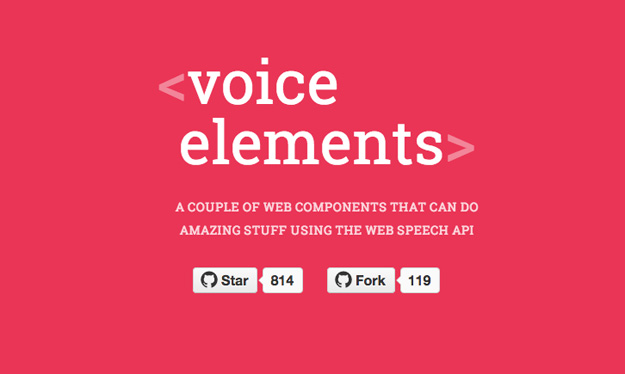
Voice Elements is a web Component wrapper to the Web Speech API, that allows you to do voice recognition (speech to text) and speech synthesis (text to speech) using Polymer. Voice recognition is the translation of spoken words into text. This is achieved in the browser by using the SpeechRecognition interface from the Web Speech API. Speech synthesis is the conversion of language text into speech. This is achieved in the browser by using then SpeechSynthesis interface from the Web Speech API.
4. JuliusJS

JuliusJS is a speech recognition library for the web. It is an opinionated port of Julius to JavaScript. It actively listens to the user to transcribe what they are saying through a callback. All recognition is done in-browser through a Worker. It is licensed under MIT License.
5. Hya.io

Hya.io is a web-based plugin-based audio application that supports hardware MIDI though Web MIDI, audio synthesis, sequencers, and lots of plugins. You can add plugins to the workspace, connect them to route audio, play, experiment. Hya supports AMD and ES6 modules. They use a simple JSON object that describes the plugin, and a constructor function. You can bind to the Hya GUI using various events, like handleMouseOver and handleMouseDown.
6. ION.Sound
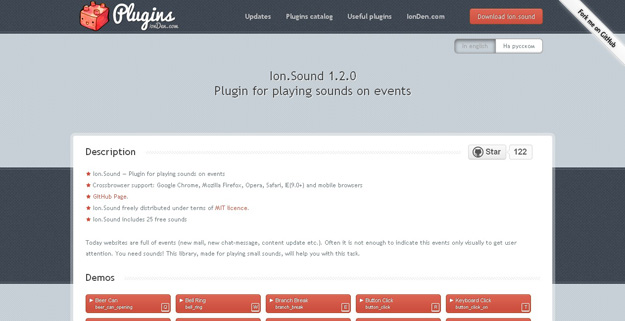
Ion.Sound is a jQuery plugin for playing sounds on events. It has been tested on Google Chrome, Mozilla Firefox, Opera, Safari, IE(9.0+) and mobile browsers. Ion.Sound freely distributed under terms of MIT licence.
7. Web Audio API Loops
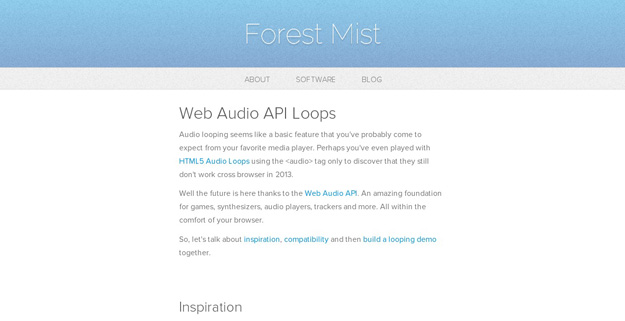
Audio looping seems like a basic feature that you’ve probably come to expect from your favorite media player. Web Audio API is an API designed to manipulate and play audio assets on a Web page or application. It is an amazing foundation for games, synthesizers, audio players, trackers and more. All within the comfort of your browser. Support is excellent with Chrome, Opera, Safari and Firefox* all on board.
8. jPlayer

jPlayer is the completely free and open source (GPL/MIT) media library written in JavaScript. A jQuery plugin, jPlayer allows you to rapidly weave cross platform audio and video into your web pages. jPlayer’s comprehensive API allows you to create innovative media solutions while support and encouragement is provided by jPlayer’s active and growing community.
9. Audio.js
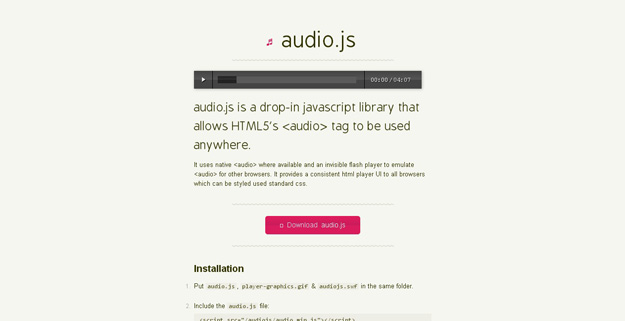
Audio.js is a drop-in javascript library that allows HTML5′s audio tag to be used anywhere. It uses native audio where available and an invisible flash player to emulate audio for other browsers. It provides a consistent html player UI to all browsers which can be styled used standard css. Audio.js focuses on playing mp3s. It doesn’t currently support the ogg format. As mp3 is the current defacto music transfer format, ogg support is lower on our list of priorities.
10. VexFlow
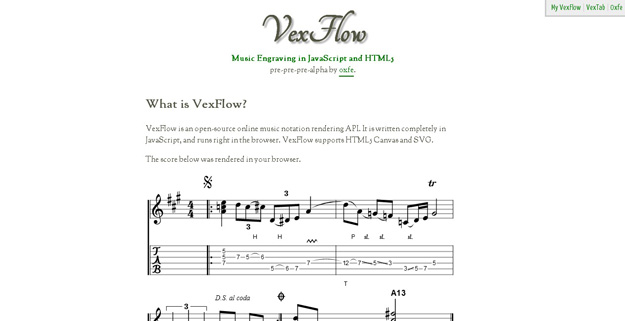
VexFlow is an open-source web-based music notation rendering API. It is written completely in JavaScript, and runs right in the browser. VexFlow supports HTML5 Canvas and SVG. The score below can be rendered in your browser.
11. Fartscroll.js
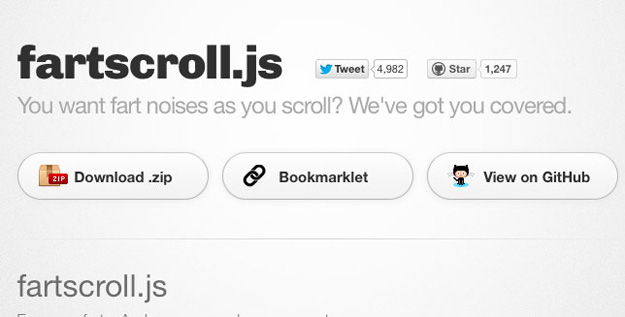
Leave it to The Onion to create something like Fartscroll.js. It does exactly what it sounds like it does: it makes your website make farting noises as users scroll.
12. Soundsnap
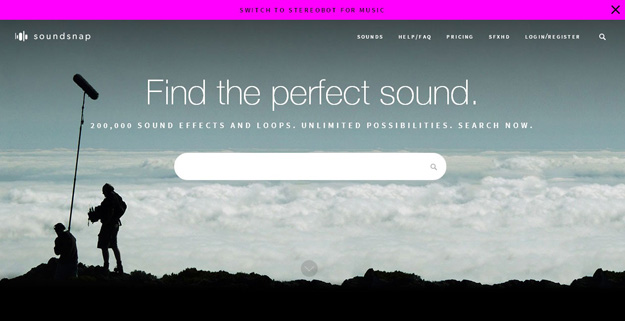
Soundsnap is a nice platform to find and share free sound effects and loops- legally. It is a collection of original sounds made or recorded by its users, and not songs or sound FX found on commercial libraries or sample CD’s.
13. Annyang
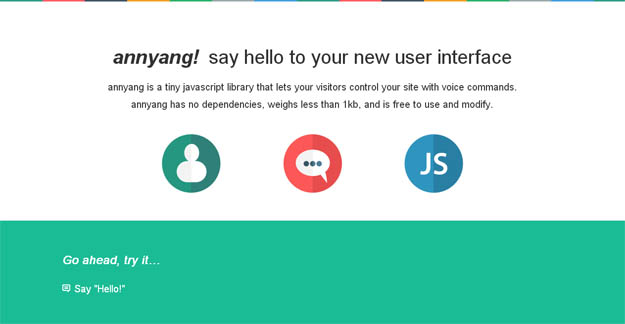
Annyang is a tiny javascript library that lets your visitors control your site with voice commands. Annyang has no dependencies, weighs less than 1kb, and is free to use and modify. It plays nicely with all browsers, progressively enhancing browsers that support SpeechRecognition, while leaving users with older browsers unaffected. It is licensed under MIT License.
14. Voix.js

Voix.JS is handy, lightweight JavaScript library for adding voice commands to your site, games and apps. It has functions to start and stop listening through the microphone and we can set events to be fired when a given keyword is detected.
15. Sound.js
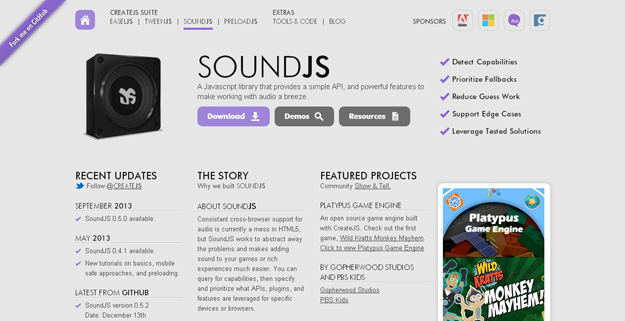
SoundJS is a library to make working with audio on the web easier. It provides a consistent API for playing audio in different browsers, including using a target plugin model to provide an easy way to provide additional audio plugins like Web Audio, and a Flash fallback. A mechanism has been provided for easily tying in audio preloading to PreloadJS.

